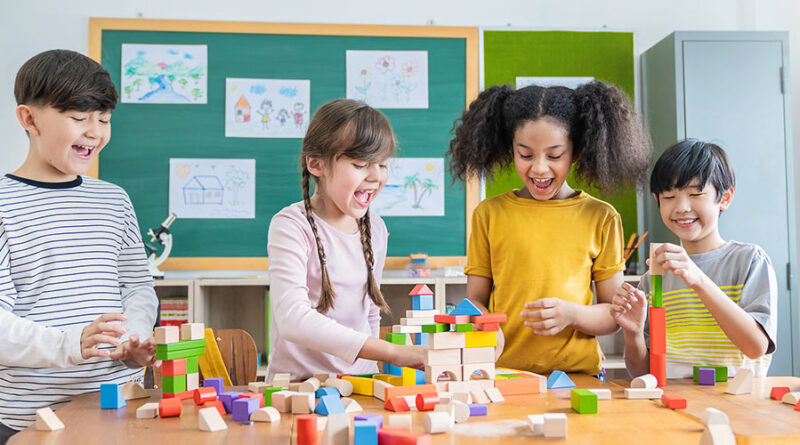I had been a high school teacher in India for five years where I always resorted to an approach that made learning an engaging and interactive experience. Now, as I am doing my graduate studies I can see that my teaching philosophy has evolved over the course of my career and it has been heavily influenced by various theories of knowledge and learning. In my view, effective teaching and learning can be attained through constructivism combined with insights from play-based learning.
Constructivism: Learning Through Active Engagement
Exploring this article on Constructivism, I discovered that I have always tried to in-cooperate constructivism in my teaching philosophy as it involves the active role of the learner in constructing knowledge. Students are not just considered as passive recipients of information, rather it emphasises that students learn best by actively engaging with content and building on their prior knowledge and experiences. This idea has been further reinforced by Vygotsky’s theory asserting the significance of social interactions.
Being a science teacher, I have applied constructivist principles in my classroom by encouraging discussions and peer -to-peer learning. For instance, I organize students into groups to explore a topic and present their findings in front of the class, when teaching complex concepts in science. This methodology resonates with inquiry based learning where students take ownership of their own learning, build up-on pre acquired knowledge and collaborate to construct new understandings.
Incorporating Play-Based Learning
My teaching practice saw a significant shift after taking the course “Play and Learn” as a part of my MEd program. Despite the fact that Play-based learning is normally associated with early childhood education, I envisioned that play can be an effective medium for engaging young learners even in secondary education. I look forward to introducing games, role-plays and invitations with materials into my lessons to kindle creativity and deeper understanding which in turn will make learning more dynamic and engaging. This very much aligns with constructivist ideas that promote social interactions and experiential form of learning.
Technology in the Classroom: Enhancing Engagement
All along my teaching career, I have been keenly interested in using technology, like smartboards or educational apps and platforms to alleviate student engagement and learning outcomes. I was quite fascinated by the idea of teaching machine by Skinner in 1954.This was one of the primary steps of introducing educational technology, making learning more engaging for students.I have found that technology allows me to provide a wide range of resources before,during and post lessons thereby creating an interactive learning environment. However, Constuctivist theory also asserts that technology should be used as a tool to facilitate deeper learning and not as a replacement for traditional teaching methods.
The Role of Play and Technology in My Evolving Philosophy
Creating a more student-centred and interactive classroom environment based on Constructivism combined with play based learning and thoughtful use of technology has become my priority in the recent years and this marks a significant shift in my beliefs about teaching and learning.As an educator I am committed to refining my teaching practice based on the theories of knowledge and learning that will lead to a dynamic, collaborative and student-centered environment.



Hi Aysha, thanks for this wonderful writing. I think it’s just logical that, as science teachers, our classroom practice should depict more constructivism than other theories of knowledge. Teaching science requires that students follow the scientific method which includes conducting experiments, formulating hypotheses, writing reports and all that, which are founded on the constructivist approach. It is also amazing to see how this approach can be related to play-based learning. Just as you have rightly indicated that PBL is mostly attributed to early childhood, it is also applicable to adult education through the game-based learning approach.
Hi Aysha,
I always admire educators like you who are able to reflect on their teaching journey and trace their evolution.
Having read lots of blog posts this week (including yours), I have noticed that most of us are adherents of constructivism, and I think it shows that we are all striving to be up-to-date in our teaching approaches. I agree with you that discussions and peer-to-peer learning are really effective in the classroom, and I wish the science classes I had as a teenager were as exciting as yours!
Looking forward to your next posts 🙂
Hi Aysha,
I really like the way you incorporated play based learning in your classroom practices. I do appreciate the way you used technology during your teaching in the classroom practices. Thanks for sharing your experience.
Ayushi